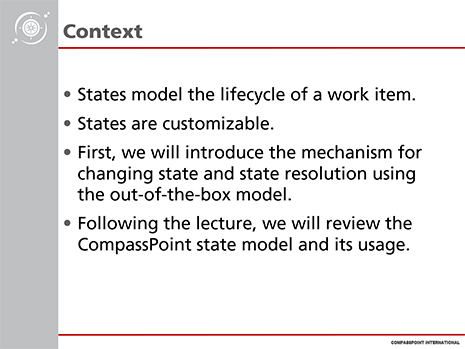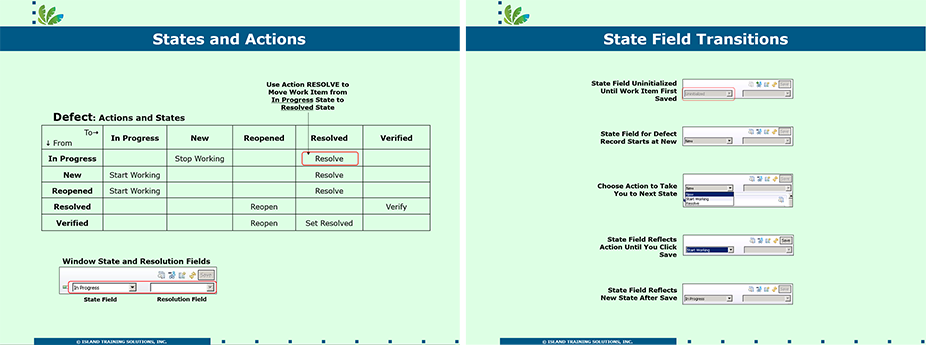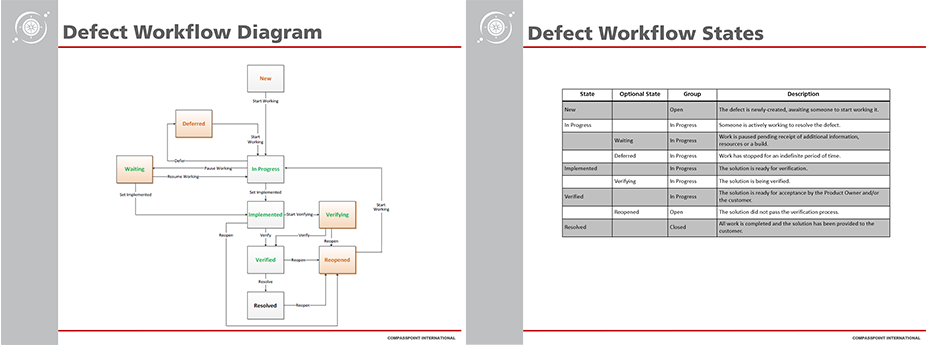Toll Free (855) 401-8485

Custom Lectures
Our on-demand provisioning platform easily (and without cost to you) integrates your custom slides into our existing standard lectures for IBM® ELM courses. The result is targeted training that creates client-specific context for tool usage. It connects the dots from a concept to a specific function/process in day-to-day work.
Client slides may be inserted at the beginning and/or end of any standard module lecture. We encourage clients to include separate slides highlighting resources or next steps at the end of a separate class.

For example, in this sample module, the client's context slide sets the stage for the standard lecture.

With the context established, the Island Training standard lecture teaches out-of-the-box tool functionality and tool usage best practices.

Following the standard lecture, the instructor covers client-specific defect workflow and defect state customizations to reinforce the concepts introduced in that module. Students can immediately relate the skills they learn to their day-to-day process.
Typical Client Topics Include:
![]() Goals and Objectives
Goals and Objectives
![]() Custom Templates
Custom Templates
![]() Workflow Diagrams
Workflow Diagrams
![]() Custom Definitions
Custom Definitions
![]() Next Steps Following Training
Next Steps Following Training
![]() Key Contacts/Resources
Key Contacts/Resources
Your-World Review Lesson
For complex IBM ELM deployments, we encourage clients to complete their training with a custom Your-World Review lecture and lab.
The Your-World Review takes customization to the next level. It is the product of a true collaboration. Our subject matter expert works with your subject matter expert (twice the brilliance) to develop a review lecture and lab that teach your process in a clone of your environment.
Clients tell us that the Your-World Review is a powerful way to transition skill mastery from the classroom to the production environment. An added bonus—follow-on support costs are minimized.
On-Demand Video Training
For organizations deploying a tool to more than 400 users, customized video training provides cost-effective and on-demand enablement across multiple geographies. Video has additional value as a support tool.
In addition to reducing cost per student, video learning typically requires less student time than formal classroom training. Video training can be accessed at convenient times or even from home, thereby causing less interruption to other work.




